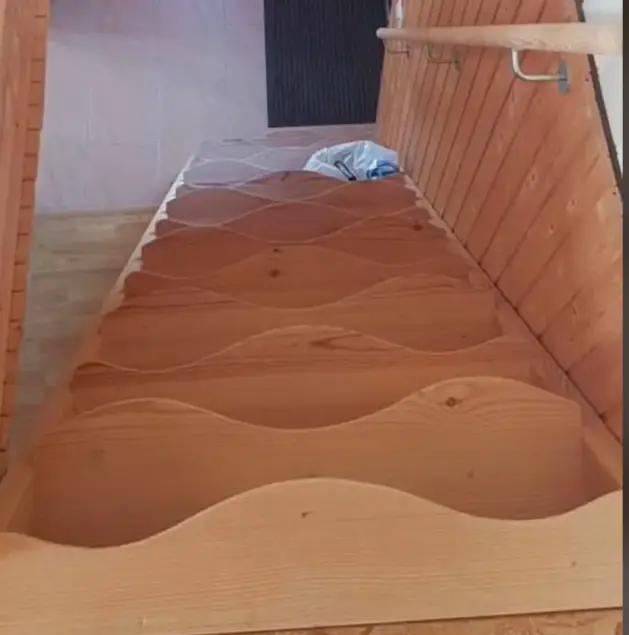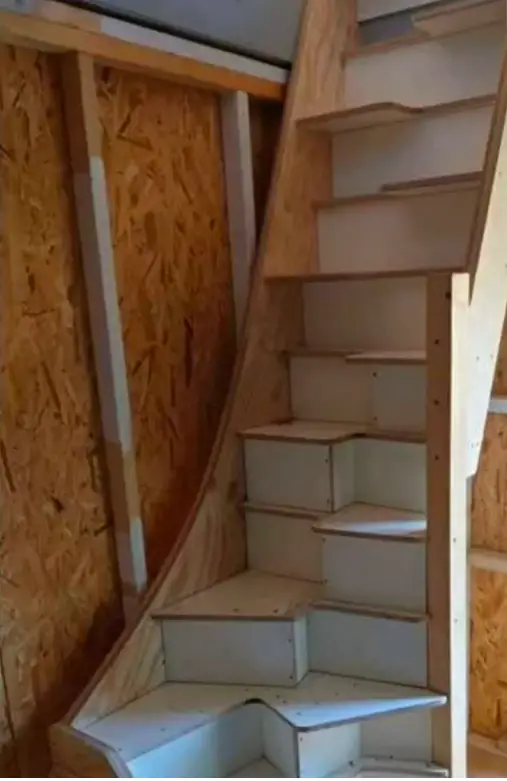Witches’ stairs, a unique and intriguing design feature, have been sparking curiosity and debate on social media platforms like TikTok. Despite their eerie name, these stairs have a surprisingly practical and space-saving purpose. Let’s delve into the history and functionality of witches’ stairs, separating fact from fiction.

Witches’ stairs, also known as alternate tread stairs, are designed to conserve space in homes, particularly in areas like attics, lofts, and tiny houses. Each step is half the width of traditional stairs, and they are staggered to maximize space efficiency. This innovative design serves as a functional and aesthetically pleasing solution for homeowners with limited space.
According to Scott Schuttner, author of “Basic Stairbuilding,” the distance between treads on a given side of an alternating-tread stair is twice the unit rise, providing more free tread area and a safer stair. Contrary to popular belief, witches’ stairs meet building codes and safety standards throughout the United States.

The origins of witches’ stairs are often attributed to J.M. Lapeyre, who patented a metal version in 1985. However, similar designs can be found in commercial ships and oil rigs, where they are referred to as ship stairs or ship ladders.
Despite the urban legend surrounding witches’ stairs, there is no evidence to support the claim that they were designed to ward off witches during the Salem witch trials. Historian Robin Briggs confirms that there is no mention of such stairs in historical literature or manuscript sources. Instead, witches’ stairs offer a unique and decorative alternative to traditional staircases, making them a fascinating and functional feature in any home.


